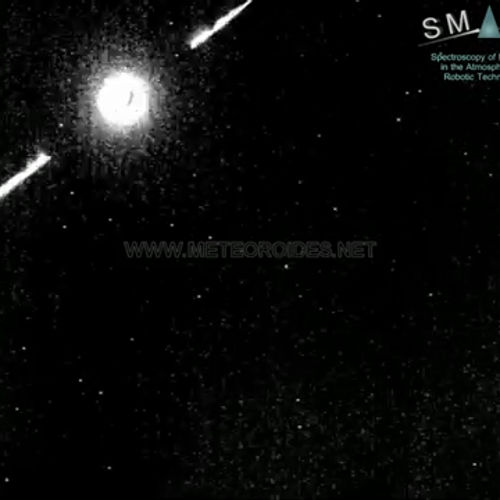
| Added | Thu, 11/08/2022 |
| Источники | |
| Дата публикации | Thu, 11/08/2022
|
| Версии |
On July 31, a fireball raced over Madrid and burned up in the atmosphere. Using footage from ground-based cameras across Europe, including the ESA-controlled AllSky7 network camera in Sebreros and the Southwest Europe Meteor Network (SWEMN) cameras, scientists were able to reconstruct its flight path. The balloon entered the atmosphere at an altitude of 100 kilometers above Madrid and burned at an altitude of 77 kilometers over the Spanish province of Guadalajara. Its size before contact with the Earth is believed to have been about 10 cm.
Scientists believe it was a fragment of comet 169P/NEAT, responsible for the annual meteor shower of Alpha Capricornids.
A meteor shower occurs when the Earth passes through the debris-strewn plume of a comet, which is formed when the comet approaches the Sun. When these fragments collide with the Earth's atmosphere, they burn up in the form of meteors, the brightest of which are known as fireballs.
It is believed that the Alpha Capricornid meteor shower appeared about 3500-5000 years ago, when half of comet 169P/NEAT broke off and crumbled into dust. The comet itself formed at the same time as our Solar system, about 4.6 billion years ago.
The dust trail from this ancient comet drifts around the Earth's orbit, creating rare meteors. At its peak, it creates only about five meteors per hour, but they are usually very bright, and often turn into fireballs.
As this drift continues, meteor showers are expected to become more intense. They are projected to be stronger than any current annual meteor shower by 2220. However, now you can admire the Alpha Capricornids in their current form until about August 15.
Новости со схожими версиями
Log in or register to post comments









